🏰 1. More Than Just Stone Walls
There’s something magnetic about standing in front of a centuries-old castle. The thick stone walls, weathered by time. The towers rise against the sky like ancient sentinels. You can almost hear the echoes of clanking armor and the flicker of torchlight against stone.
The first time I visited a medieval castle—somewhere in the Welsh countryside—it was raining, which somehow made the whole thing feel more authentic. The walls were damp, the steps worn smooth by generations of feet, and from the battlements, I could see the curve of the land rolling out like a faded tapestry. It was one of those moments where history suddenly feels real—not something in a textbook, but something living, breathing.
But here’s the thing about castles: they’re not just grand buildings. They’re storytellers. Silent ones, yes, but storytellers all the same. They speak of power and fear, of defense and ceremony, of ambition, conquest, and sometimes heartbreak. From hastily built wooden forts to jaw-dropping palaces dripping with gold leaf, castles have mirrored the arc of human civilization—shaped by war, technology, art, and ego.
And over time, castles changed. They had to. What started as rugged military fortresses eventually morphed into refined residences for royalty and nobility. Their thick walls made way for glass windows. Arrow slits gave way to chandeliers. Courtyards once filled with troops and livestock transformed into manicured gardens for tea and diplomacy.
But that transformation didn’t happen overnight. It took centuries, revolutions, and gunpowder. It happened slowly, stone by stone, as the world changed and castles changed with it.
In this journey, we’ll walk through that evolution. From the brutal practicality of early medieval keeps to the indulgent opulence of Renaissance palaces. We’ll climb narrow spiral staircases, duck into shadowy chambers, peek behind tapestries, and gaze out across battlements that once bristled with archers. We'll also explore castles beyond Europe, where different cultures built their own forms of fortified grandeur—some steeped in legend, others forged in empire.
Because to truly understand castles, we can’t just look at them as buildings. We have to look at what they meant—to kings, to commoners, to enemies, and now to us.
So buckle up your metaphorical armor. The story of castles begins not with turrets and tiaras, but with fear, feudalism, and the struggle to survive.
Let’s step back in time—to when Europe was fragmented, violent, and deeply uncertain. A time when power belonged not to nations, but to whoever had the strongest walls.
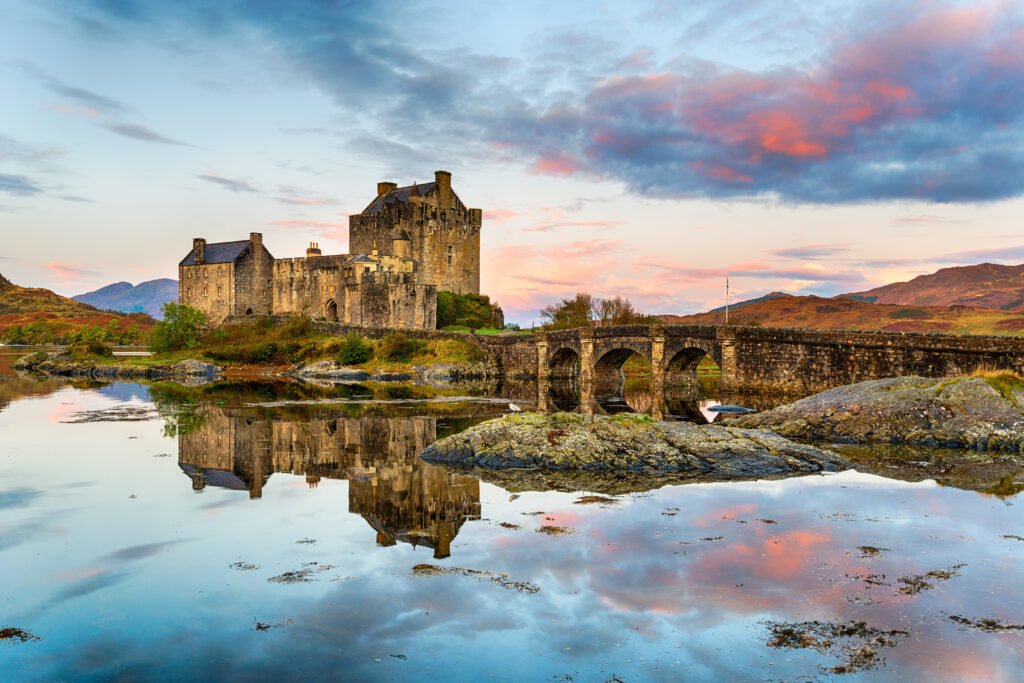
🛡️ 2. The Birth of the Castle (9th–11th Century)
Why Castles Were Built in the First Place
Picture Europe around the 9th century. The Roman Empire was long gone, trade routes were disintegrating, and central authority had all but collapsed. Vikings were raiding from the north, Magyars sweeping in from the east, and Saracen pirates prowling the Mediterranean. It was a chaotic, terrifying time to be alive.
And when you're living in fear—of your crops being torched, your village pillaged, or your family taken—what do you do?
You build a fort.
That’s exactly what many local lords across Europe did. They couldn’t rely on kings or emperors for protection. So they took matters into their own hands and started building what we now call motte-and-bailey castles.
These weren’t the grand stone fortresses we think of today. Early castles were humble, almost crude by comparison. But they were brilliantly practical.
A motte was a raised earth mound—sometimes natural, sometimes manmade—with a wooden tower perched on top. That was your last line of defense. Below it, the bailey was an enclosed courtyard surrounded by a wooden palisade and a ditch, sometimes filled with water. People lived and worked in the bailey. When attackers came, everyone rushed up the motte and barricaded the tower.
Simple. Fast to build. Effective.
The Norman lords who invaded England in 1066 under William the Conqueror brought this design with them—and then built hundreds of them. You can still see their grassy outlines across the British countryside today, silent mounds where history was once fought and fortified.
But these early castles weren’t just military structures. They were power symbols. If you had a castle, you had control. You could protect your land, collect taxes, and make sure everyone in the area knew who was boss. Castles became the beating hearts of local power. Lords governed from them, soldiers patrolled from them, and villagers looked to them for protection—albeit often at a high cost.
And because they were built quickly and often from wood, they had one big problem: fire.
All it took was a flaming arrow or a well-placed torch to turn a wooden castle into a smoking ruin. So over time, the smartest (and richest) lords started replacing wood with stone.
It wasn’t just about durability—it was about prestige. A stone castle said you were here to stay. That you weren’t just a temporary lord, but a permanent ruler. The age of stone was coming, and it would reshape the very idea of what a castle could be.
But before we get to those massive stone walls and majestic keeps, it’s worth pausing to appreciate the gritty, functional genius of the early motte-and-bailey.
They were rough. They were rudimentary. But they changed history.
They were the beginning of the castle as we know it.
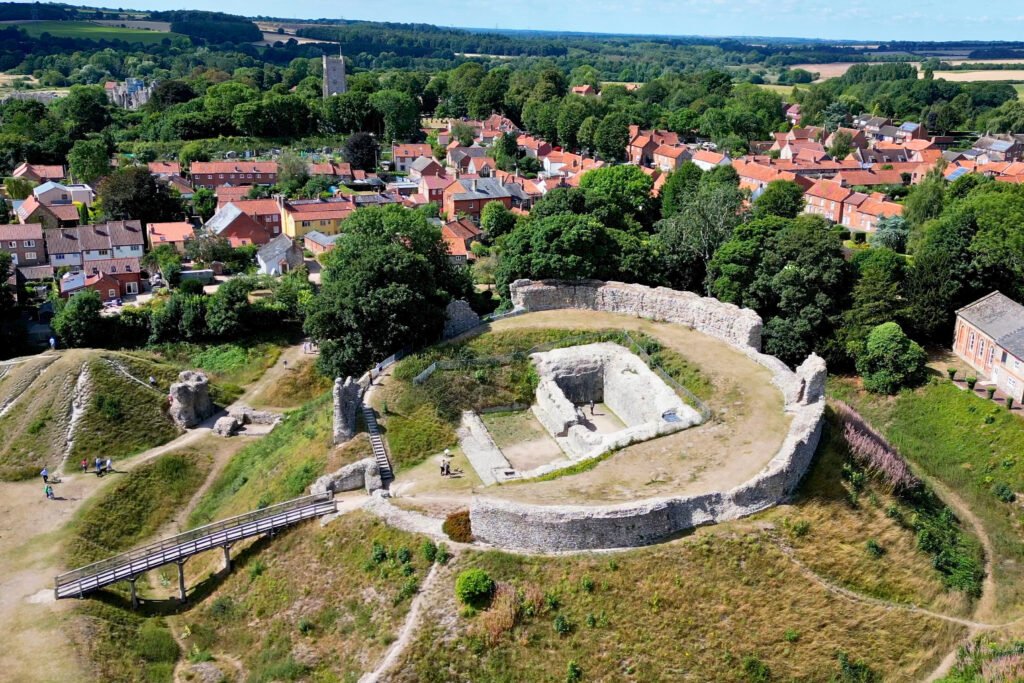
🧱 3. Castles Get Serious — The Rise of Stone Fortresses (12th–13th Century)
When Castles Became Power Statements
Wood had done its job. But by the 12th century, it was no longer enough. Too vulnerable to fire, too flimsy against siege engines. Castles needed to be more than quick shelters—they had to be strongholds that could withstand serious attacks.
Enter the age of stone castles—and the dawn of true medieval fortification.
You didn’t just build a stone castle. You engineered it. These were massive undertakings, often taking decades and entire workforces to complete. And they weren’t just about defense anymore—they were statements. If you were a king, baron, or bishop, you didn’t just want to feel safe. You wanted the world to see your strength.
🔒 The Defensive Revolution
Stone castles brought a whole new vocabulary to warfare:
• Curtain walls surrounded the entire complex—high, thick, and often double-layered.
• Gatehouses were reinforced with portcullises and murder holes (yes, they’re exactly what they sound like).
• Moats, both dry and wet, added an extra barrier.
• Keeps—massive stone towers—rose at the center like unbreakable hearts of the castle.
And then there were the arrow slits, narrow vertical windows just wide enough for an archer to aim but small enough to deflect incoming fire. Add in crenellations (those iconic battlement notches) and machicolations (openings to drop rocks or boiling oil on attackers), and you’ve got a veritable fortress of doom.
🏰 Castles That Still Dazzle
Some of Europe’s most iconic castles were born during this era.
Windsor Castle in England was fortified in stone under Henry II. Check out our full guide to Windsor Castle for more history, travel tips, and insider insights.
Carcassonne in France became a double-walled wonder with 53 towers—every bit the medieval dream.
And Krak des Chevaliers, a Crusader stronghold in Syria, set the gold standard for military castle design, with layered defenses and ingenious use of topography.
What’s remarkable is how many of these places are still standing. Not just ruins, but entire structures you can walk through today, touching stones placed by medieval masons nearly 900 years ago.
🛡️ War and the Castle Arms Race
As siege tactics evolved, so did the castles. The invention of the trebuchet—a massive counterweight-powered catapult—forced castle builders to go even thicker with their walls and smarter with their layouts.
Everything became about angles, elevation, and layers. A good castle didn’t just resist attack—it funneled the enemy into death traps. Attackers would face drawbridges, courtyards filled with crossfire, and gates that led straight into killing zones.
It was a brutal kind of chess, where architecture and warfare played hand in hand.
⚔️ The Castle as a Center of Control
But defense was only part of the picture. These castles were also administrative centers, courts, prisons, and treasuries. They housed lords and their households, hosted banquets, and sometimes—though rarely—offered moments of peace.
They were also expensive. Maintaining a stone castle wasn’t cheap, and not every lord could afford one. But those who could? They were building legacies in limestone.
By the end of the 13th century, the stone castle had reached its medieval peak—formidable, majestic, and deeply symbolic.
They weren’t just places to survive in. They were places to rule from.
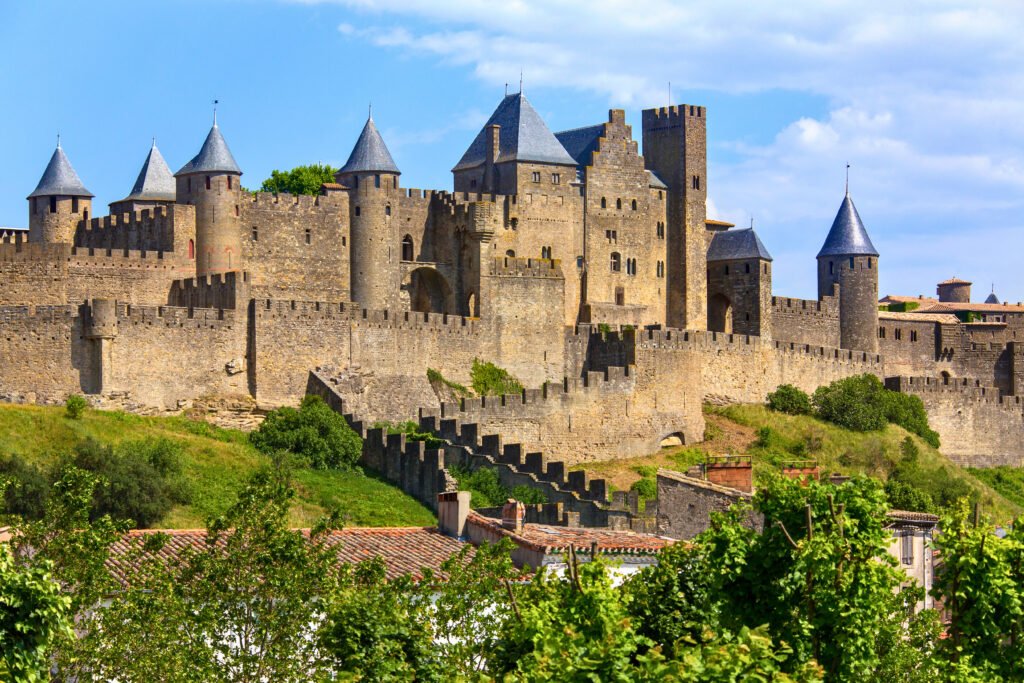
🍞 4. Life Inside a Medieval Castle
Daily Bread and Iron Discipline
We often think of castles as silent, empty ruins. But back in their heyday, these places were alive—and loud. Horses clattered across stone courtyards, blacksmiths hammered in the forges, servants rushed about with buckets and trays, and the smells of stews and straw mixed in the air.
Life inside a medieval castle wasn’t glamorous. It was structured, crowded, and—unless you were the lord or lady—pretty rough.
👑 Who Actually Lived in a Castle?
Let’s start with the people. At the top of the pyramid was the lord, who held the castle and surrounding lands on behalf of the king. His lady often managed domestic affairs and could wield serious influence, especially in his absence. Then came the knights, trained warriors bound by loyalty and chivalry (at least in theory).
Beneath them were servants, cooks, squires, stable hands, scribes, and chaplains. Dozens—sometimes hundreds—of people kept the place running.
In larger castles, there might also be craftsmen, armorers, and even entertainers. And during times of siege, local villagers could crowd into the bailey or courtyard for protection. Imagine a bustling stone village behind walls—that’s what a full castle felt like.
🍲 What Did They Eat?
Forget five-course meals served on golden platters. Castle food was hearty and often repetitive. The noble table enjoyed roasted meats, fish, fresh bread, and seasonal produce. Spices were rare and expensive, so salt and vinegar were the main flavors. On special occasions? A whole roasted boar or swan might make an appearance.
The rest of the castle staff ate simpler fare: porridge, vegetable stews, coarse bread, and whatever could be preserved. Ale or watered-down wine was the standard drink—clean water was hard to come by, and boiling it wasn’t common practice yet.
🛏️ Living Quarters: Not Quite Luxury
A common myth is that castles were freezing, dank places with zero comfort. And while they weren’t exactly cozy chalets, they weren’t miserable holes either.
Great halls served as dining rooms, meeting spaces, and courtrooms. Bedrooms (called solars) offered privacy and sometimes warmth from a fireplace. The wealthiest castles had tapestries to block drafts, canopied beds, and even privy chambers—a big upgrade from the outhouses in the bailey.
But even the fanciest chambers had downsides: fleas, smoke from hearth fires, and little insulation. Bathing wasn’t common (maybe once a week, or a month!), and hygiene was, let’s say… a work in progress.
🛡️ Work and Routine: Duty Ruled Everything
A castle ran like a machine—with strict routines.
• Servants rose at dawn to prepare fires, food, and clean the chambers.
• Guards rotated through watch shifts on the battlements.
• Chaplains rang bells for prayers and masses.
• Children of nobles trained in reading, manners, and combat (yes, swordplay started young).
• Hunts and feasts were the highlights, but most days were built around labor, prayer, and maintaining order.
And of course, there were constant drills and preparations for the possibility of attack. You never knew when a neighboring lord or invading force might test your defenses.
🎭 Entertainment and Ceremonies
It wasn’t all war and work. Life had its moments of color—minstrels, troubadours, and court jesters entertained the lords and guests. Castles hosted weddings, tournaments, religious feasts, and the occasional royal visit (which meant a flurry of cleaning and panic).
And those great halls? They lit up with laughter, music, and dancing when the occasion called for it.
Daily life inside a medieval castle was a balance of strength and service. Everything revolved around hierarchy, survival, and the ever-present idea that the outside world was dangerous—and that these thick walls were both your home and your shield.
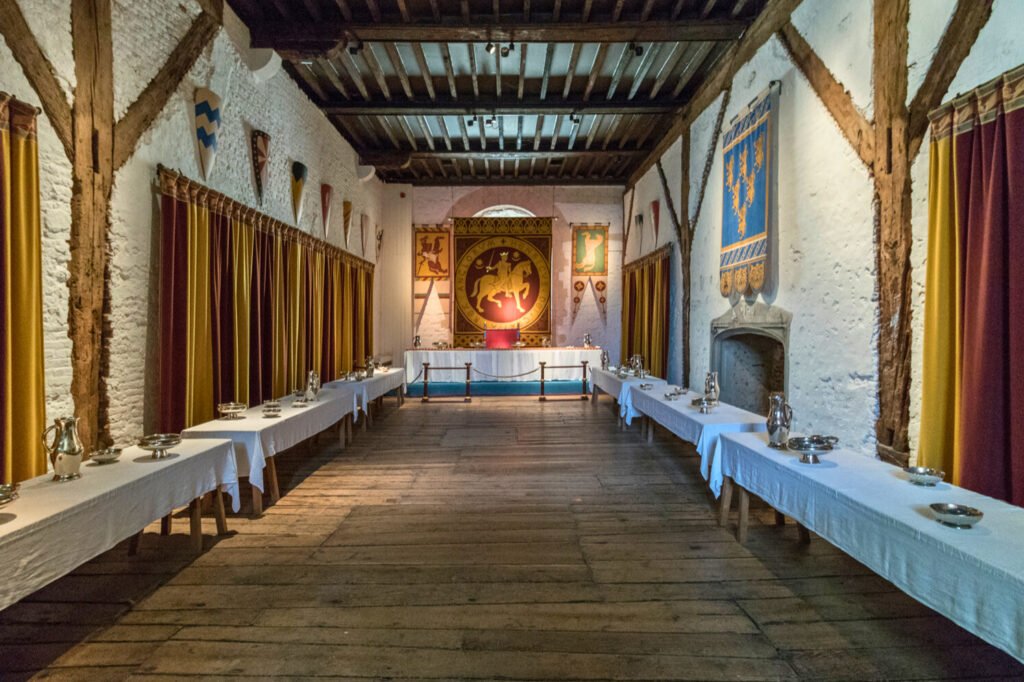
🕍 5. The Gothic Shift & Rise of Comfort (14th–15th Century)
When Castles Became Homes
By the 14th century, the medieval world was evolving—and so were its castles. Warfare hadn’t disappeared, but it had changed. So had politics, religion, trade, and ideas of power. Castles, once pure military machines, began softening around the edges.
Suddenly, comfort mattered. Style mattered. Prestige wasn’t just about how high your towers were, but how luxurious your solar was or how elegant your banquet hall looked.
This was the beginning of a shift—from fortresses to palaces.
🏛️ Enter Gothic Architecture
If you’ve ever walked into a cathedral with pointed arches, ribbed vaults, and stained glass windows casting rainbow light on the floor, you’ve already felt the pull of Gothic architecture.
Now, imagine that style creeping into castle walls.
Towers became slimmer but taller. Windows grew larger, letting in more light (a luxury and a statement). Ceilings soared, especially in great halls, where lords held court under wooden beams and hanging banners. Stone carvings and tracery adorned entrances and windows. Instead of just intimidating enemies, castles now aimed to impress guests.
Bodiam Castle in England is a perfect example. Built in the late 14th century, it has all the signs of a fortress—moat, battlements, gatehouse—but it’s also symmetrical, picturesque, and clearly designed to look good as much as to defend. It’s almost theatrical.
This wasn’t about giving up on defense. It was about adding style to strength.
🛋️ Life Gets a Little Softer
The elite didn’t want to live like soldiers anymore. They wanted warmth, space, and prestige. So castles adapted.
• Fireplaces became standard, replacing open hearths.
• Tapestries served double duty—insulation and artwork.
• Glass windows (for the wealthy) offered light without the draft.
• Gardens were added inside castle walls—both for food and beauty.
• Private chambers allowed nobles to retreat from the bustle of the hall.
Rooms became specialized: a place to dine, a place to sleep, a place to pray. Castles slowly started resembling proper homes, with layers of public and private life.
And with more comfort came more ceremony. These were the years of chivalry, pageantry, and knightly codes. Hosting banquets, jousts, and feasts was as political as it was social. Your castle became your stage.
⚔️ The Castle's New Role
In many ways, castles became symbols of stability in a world that wasn’t always stable.
The Hundred Years' War, the Black Death, and increasing social unrest all loomed large during this period. But within the castle walls, life carried on—ordered, hierarchical, and full of ritual. A well-appointed castle wasn’t just a place to sleep or fight—it was an ecosystem, a projection of power, and a form of legacy.
The line between castle and palace had started to blur. And once that line was crossed, there was no going back.
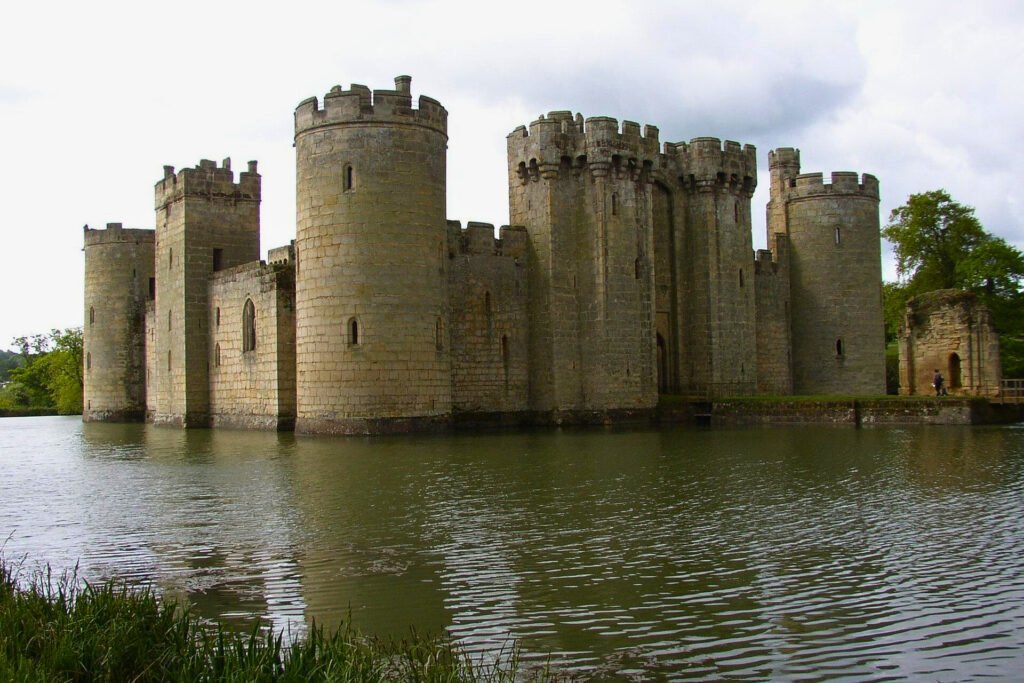
🎨 6. Castles in the Renaissance & Baroque Era (16th–17th Century)
When War Took a Backseat to Wonder
By the time the Renaissance rolled around, the world had shifted. The printing press was spreading ideas. Gunpowder had made thick castle walls less invincible. And kings were no longer just warlords—they were patrons of the arts, philosophy, and architecture. The age of the traditional medieval castle was fading, and in its place, something new—and often jaw-dropping—was rising.
Welcome to the era of palaces.
💥 Gunpowder Changed the Game
Let’s start with a bang—literally.
The spread of gunpowder artillery flipped everything castle designers had known on its head. A few well-aimed cannonballs could do in minutes what a siege tower and battering ram couldn’t accomplish in weeks. High curtain walls and square towers, once strategic strengths, became liabilities.
So the logic changed. Why build high when cannonballs could tear through stone? Why build for battle when diplomacy, inheritance, and political marriages now define power?
The castle’s military function was no longer the priority. Instead, it became a showcase for wealth, lineage, and artistic taste.
🏛️ The Rise of the Château and Palace
In France, the châteaux of the Loire Valley tell the story best. Just look at Château de Chambord—a masterpiece of Renaissance architecture with spiraled staircases, sculpted façades, and decorative towers that look straight out of a dream. It was never meant to repel invaders. It was built to awe guests.
Over in Italy, families like the Medici turned fortresses into lavish villas. In Austria and Bavaria, noble estates began taking on the Baroque flair—ornate, theatrical, and rich in symbolism.
And then, of course, came Versailles. It wasn’t just a palace—it was the palace. With 2,300 rooms, endless gardens, and golden halls, Versailles wasn’t about shelter. It was about power dressed up in art and mirrors. Louis XIV didn’t need battlements—he had ballet, ambassadors, and the divine right of kings.
Check out our full guides to Château de Chambord and Versailles for history, travel tips, and insider insights.
🪞 Castles of Culture, Not Combat
The architecture followed suit:
• Fortified towers were replaced by symmetrical façades.
• Thick walls gave way to decorative columns and arched windows.
• Moats became ornamental water features.
• And the interiors? Think frescoed ceilings, gold-leaf trim, and ballrooms with chandeliers the size of carriages.
Castles were now palaces of prestige. The message was clear: the battlefield was the past—the court was the future.
🖼️ Art, Science, and the New Role of Royal Homes
With peace (relatively speaking) came culture. Nobles wanted their residences to reflect not only their rank but also their enlightenment. They filled their halls with paintings, libraries, mathematical instruments, and musical salons.
Even castles still standing from the medieval era were remodeled to match Renaissance tastes. Stone walls were plastered and painted. Keeps were converted into galleries. What once echoed with the clang of armor now rang with lute music and laughter.
The castle had been reborn as a stage for art, intellect, and excess.

💣 7. The Fall of the Castle & Rise of the Palace (18th–19th Century)
The Cannon That Changed Everything
By the 18th century, castles as we once knew them—military, moated, mighty—had all but vanished. Not physically, of course. Many still stood, perched on cliffs or nestled in valleys, a few even repurposed as prisons or state buildings. But their purpose had shifted. The cannon had made that decision final.
There was simply no going back.
War had changed. Power had changed. And the aristocracy had new priorities—luxury, legacy, and lineage.
🎆 Goodbye War, Hello Wonder
While early artillery in the 15th century had already shaken medieval defenses, by the 1700s, gunpowder empires were in full swing. Fortification moved toward star-shaped bastions and low-lying citadels (think Vauban in France), far more practical against cannon fire. The vertical castle was out. The geometrically flattened fort was in.
But most aristocrats didn’t even bother with defenses anymore. Why build battlements when your biggest threat was political scandal, not a sword-wielding neighbor?
Instead, they leaned hard into display.
Across Europe, palaces became the pinnacle of noble identity. The function of a castle shifted fully from defense to status symbol—prestige carved in marble and surrounded by manicured lawns.
🏛️ Architecture for Applause
Castles of the past had been built to resist. Palaces of this age were built to be admired. They featured:
• Ornate façades with classical columns and sculptural reliefs.
• Grand staircases leading to elaborate ballrooms.
• Ceiling frescoes with mythological themes.
• Vast gardens designed with mathematical precision.
If you’ve ever walked through the halls of Schönbrunn Palace in Vienna or the Royal Palace of Caserta in Italy, you know the feeling: every inch whispers power—not from force, but from finesse. Check out our full guide to Schönbrunn Palace for history, travel tips, and insider insights.
👑 Symbolism Over Stone
And it wasn’t just about architecture. These palaces became theaters of the monarchy. Ceremonies, diplomatic receptions, and court life revolved around strict etiquette, hierarchy, and image.
The nobility didn’t need high towers to feel powerful. They had powdered wigs, court musicians, and gilded furniture. Their “castles” became places to host philosophers, musicians, and ambassadors—not archers and knights.
Many old castles were abandoned or fell into ruin. Others were converted into palaces with new facades and redesigned interiors. The fortress had become a frame for art and legacy.
🕰️ But Nostalgia Was Coming…
Ironically, as castles fell out of use, people began romanticizing them like never before.
Painters started capturing ruined towers bathed in moonlight. Poets wrote about lost chivalry. The ruins became symbols—not of defense, but of melancholy beauty. They reminded people of a more “noble” time, even if that time had been bloody and brutal.
And soon, a new generation of dreamers would start building castles again—not to defend a realm, but to revive a fantasy.
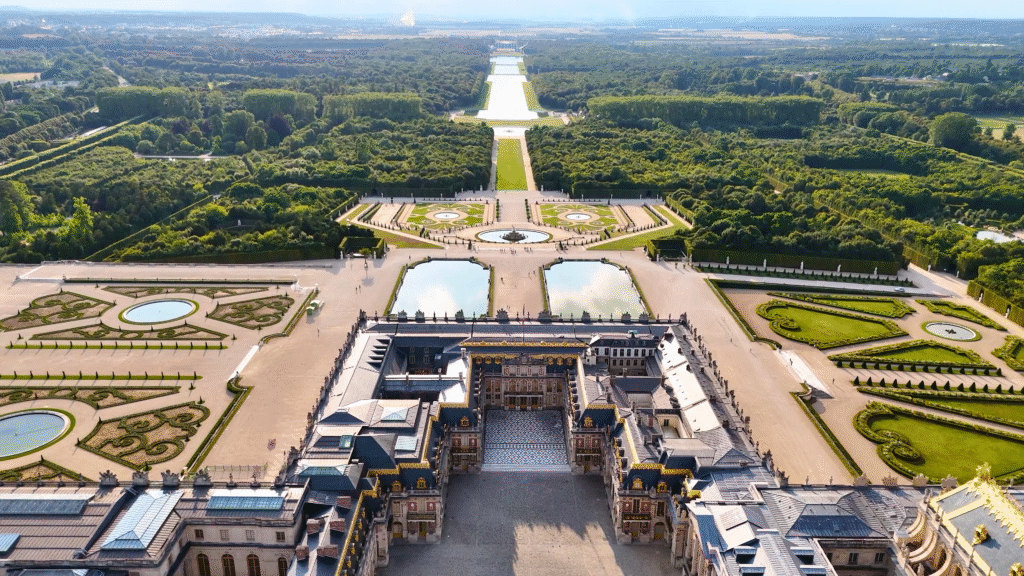
✨ 8. The Romantic Revival & Fantasy Castles (19th Century Onward)
When Castles Became Dreams
By the 1800s, real knights in armor were long gone. Cannons had made battlements obsolete, and most European monarchs were more interested in diplomacy than duels. But something curious happened: just as castles had lost their military function, people fell in love with them all over again.
Not as fortresses. Not even as palaces.
But as fantasies.
Welcome to the Romantic Revival—an era obsessed with the past, where ruins inspired poetry and nostalgia reigned supreme. This wasn’t about practical defense or ruling kingdoms. It was about dreaming up the past—and rebuilding it, one turret at a time.
🏰 The Fairytale Blueprint: Neuschwanstein and Beyond
If there’s one castle that defines this era, it’s Neuschwanstein. Check out our full guide to Neuschwanstein Castle for history, travel tips, and insider insights.
Perched high in the Bavarian Alps, built in the late 1800s by the eccentric King Ludwig II of Bavaria, Neuschwanstein looks like it was pulled straight from a storybook—and in a way, it was. Ludwig was obsessed with medieval legends and operas (especially Wagner), and his castle was less about royal function and more about personal fantasy.
Towers spiral into the sky. Balconies offer sweeping alpine views. The throne room gleams with mosaics and chandeliers. It wasn’t even finished when Ludwig died—but it didn’t need to be. The myth had already taken hold.
And later? Walt Disney used it as inspiration for Sleeping Beauty’s castle. So yeah… it left a mark.
🎭 Castles for Romance, Not War
This Romantic revival wasn’t just in Bavaria. Across Europe, new “castles” were being built to look medieval—despite having indoor plumbing, central heating, and no strategic military use.
• In Portugal, Pena Palace combined Gothic, Moorish, and Renaissance styles in a whimsical riot of color. Check out our full guide to Pena Palace for history, travel tips, and insider insights.
• In Scotland, Balmoral Castle, Queen Victoria’s retreat, embraced baronial style as a nod to medieval heritage.
• In France, Pierrefonds was restored by Viollet-le-Duc with a heavy dash of imagination and flair.
These castles weren’t backward-looking in function—they were forward-looking in fantasy. They catered to an upper class that wanted to surround itself with beauty, history, and romance—even if that history was a little embellished.
🌍 Castles Spread Worldwide
The Romantic movement wasn’t confined to Europe.
In the Americas, ambitious elites built their own interpretations of medieval glamour—Boldt Castle in New York, Castelo de Itaipava in Brazil (Look at our full guide to Castelo de Itaipava), and even parts of the Biltmore Estate in North Carolina. Across the globe, Gothic and Romantic styles became symbols of status, mystery, and nostalgia.
Even when they were new, these castles looked old on purpose. They were monuments to imagination.
📚 Castles in the Modern Imagination
At the same time, literature and art were fanning the flames. Gothic novels like Dracula and Frankenstein brought haunted castles to life in readers' minds. Romantic poets described ivy-covered ruins as places of sublime beauty. Painters like Caspar David Friedrich made crumbling towers look like portals to another world.
The idea of the castle had evolved again—no longer a military necessity or a noble residence, but a canvas for storytelling.
Even today, castles built centuries ago are often remembered less for their history than their feel—their ability to make us dream.

🏨 9. Modern Castles — From Ruins to Resorts
How Castles Live On
Today, castles are no longer places of siege or sovereign rule—but they’re far from forgotten. In fact, they might be more loved now than ever.
Across Europe and beyond, thousands of castles—some crumbling, some perfectly preserved—have found new lives. From boutique hotels and museums to movie sets and wedding venues, these stone giants continue to adapt, even centuries after their original purpose faded.
Because castles, it turns out, are hard to kill.
🏚️ Some Fell Into Ruin…
Let’s be honest: not all castles made it through the ages in great shape. Many were abandoned, dismantled for stone, or left to nature. Rain, frost, and ivy took over. Walls collapsed. Roofs caved in.
But strangely enough, these ruins became even more romantic.
Think of Tintagel on the Cornish coast—linked forever with the legend of King Arthur. Or Montségur in the French Pyrenees, hauntingly perched atop a mountain ridge. These aren’t just ruins. They’re mystical landmarks, telling silent stories to anyone willing to hike their way there.
And in many countries, these sites are now protected—part of national heritage programs or UNESCO lists. They may no longer serve kings, but they still serve the collective memory.
🏰 Some Became Hotels, Museums, and Dream Destinations
Not all castles were lost to time. In fact, some of them never looked better.
Across Europe, noble families (or savvy entrepreneurs) transformed castles into:
• Luxury hotels with four-poster beds and candlelit dinners.
• Museums displaying medieval armor, royal portraits, and ancient manuscripts.
• Event spaces for weddings, festivals, and medieval reenactments.
• Tourist attractions complete with falconry shows, dungeon tours, and costumed guides.
You can stay overnight at Ashford Castle in Ireland, explore the art collections at Château de Fontainebleau, or sip wine under the arches of Castello di Amorosa in California’s Napa Valley (a replica, yes—but an impressive one).
And for the ultimate fairytale? Castles like Hochzeitsschloss Moritzburg in Germany are now known as wedding castles. Because who doesn’t want to get married in a place where dukes once dined?
🌐 Castles Across Cultures
It’s not just Europe anymore. Across Asia, Africa, and the Americas, local forms of castle-like architecture are being preserved and promoted:
• Mehrangarh Fort in India looms over Jodhpur like a desert titan, now a museum and cultural center. Check out our full guide to Mehrangarh Fort.
• Himeji Castle in Japan—known as the “White Heron Castle”—remains one of the most iconic and beloved landmarks in the country. Check out our full guide to Himeji Castle.
• Castillo San Felipe de Barajas in Colombia showcases colonial fortification at its finest. Check out our full guide to Castillo San Felipe de Barajas.
Each of these places tells a different story. But they all reflect one truth: the human desire to protect, impress, and endure.
🎥 Lights, Camera, Castle
Let’s not forget film and TV. Castles have become visual shorthand for epic storytelling—whether in fantasy (Game of Thrones, Harry Potter) or history (Braveheart, The Crown).
Some castles are practically celebrities in their own right:
• Alnwick Castle stood in for Hogwarts.
• Doune Castle has featured in Monty Python, Outlander, and Game of Thrones.
• Highclere Castle became synonymous with Downton Abbey.
Each screen appearance brings new visitors, eager to walk where their favorite characters did—and to feel the magic for themselves.

🌍 10. Around the World in Castles
Global Perspectives and the Universal Allure of Castles
We tend to think of castles as a strictly European phenomenon. Turrets in France, moats in England, ramparts in Germany. But the truth is—the world is full of castles.
They just don’t always look like the ones from our storybooks.
Because across continents and cultures, people have always needed protection, prestige, and presence. And whether you call it a castle, a fortress, a citadel, or a palace, the idea is the same: defend what matters, and display your power doing it.
🏯 Asia: Castles of Harmony and Strength
In Japan, castles like Himeji, Matsumoto, and Osaka tower in elegance and simplicity. Built with wood, stone bases, and sloping roofs, these castles prioritized aesthetics and balance, often blending with nature around them.
Their white plaster walls gleamed against green hills, and their intricate defense systems—mazes of gates, angled walls, and hidden floors—were as clever as anything in Europe.
Unlike the towering cold stone of medieval Europe, Japanese castles felt more like commanding temples.
In China, fortified palaces like the Forbidden City served as symbolic power centers rather than traditional castles—but still played the same role of commanding respect and asserting rule.
🏜️ The Middle East & North Africa: Citadels in the Sands
Travel through the Middle East, and you’ll find desert fortresses that tell tales of empires and emirs. Castles like Krak des Chevaliers in Syria or the Citadel of Aleppo aren’t just military marvels—they’re architectural achievements designed to intimidate and endure.
In Morocco, the Kasbahs and ksars—like Aït Benhaddou—were fortified villages with thick earthen walls that blended beautifully with the desert landscape. They weren't just defensive—they were functional, sustainable, and stunning.
🏞️ Africa: Fortresses of Trade, Faith, and Defense
Africa's castles tell a different kind of story—one of trade, resistance, and colonization.
• On the Swahili Coast, Fort Jesus in Kenya defended Mombasa from European and Ottoman powers. Check out our full guide to Fort Jesus.
• In West Africa, colonial forts like Elmina Castle in Ghana became dark monuments to the transatlantic slave trade—places of unspeakable pain and complex legacy.
• Inland, fortified walls and royal compounds (like those in ancient Benin or the walled city of Harar) offered protection and prestige in equal measure.
Africa’s castles don’t always match the fairy tale image. But they reflect a reality far richer and deeper.
🏛️ The Americas: Imported Dreams and Local Icons
In the Americas, castles came later—and often from the hands of European colonizers or nostalgic romantics.
• Castillo San Felipe de Barajas in Colombia and Castillo de San Marcos in Florida were built to fend off pirates and rival empires.
• Chapultepec Castle in Mexico became an imperial palace with a sweeping view of history.
• In the 19th and 20th centuries, newly wealthy Americans built castle-style mansions to emulate the European elite. Boldt Castle, Hammond Castle, and even Hearst Castle drew directly from old-world aesthetics.
And then there’s Castelo de Itaipava in Brazil—a Neo-Gothic marvel built entirely from imported European stone in the 1920s. Not for defense, but for fantasy.
✨ Why We Still Love Castles
Whether rising from a Bavarian peak or tucked into a quiet valley in Bhutan, castles fascinate us. They stir our imagination. They connect us to history in a way few structures can. They’re reminders of ambition, artistry, and our desire to leave something permanent in a world that’s anything but.
Even now, as digital life dominates and skyscrapers pierce the clouds, castles still hold our gaze. Maybe because they offer something rare—a bridge between myth and memory. A place where stories were made… and are still being told.
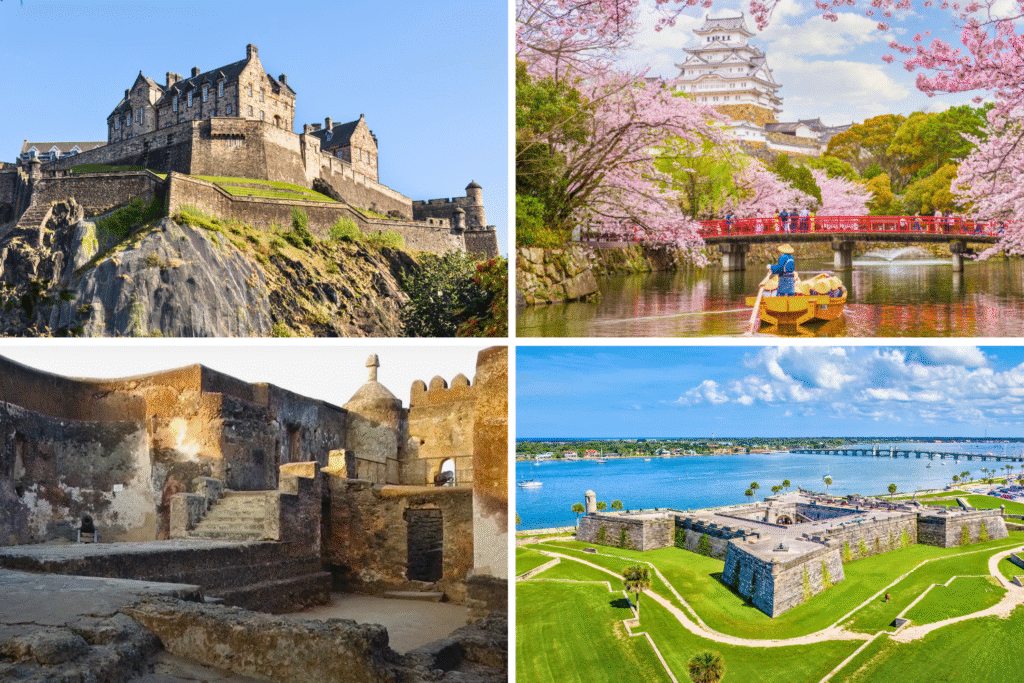
🏰 Final Thoughts: From Walls of War to Windows into the Past
Castles were born from necessity. Shaped by war. Transformed by peace. And reimagined by dreamers.
They started as wooden forts on lonely hills and grew into architectural wonders that spanned continents and centuries. From Europe’s battle-scarred towers to Asia’s graceful citadels, from haunted ruins to luxury hotels, they remind us that every stone holds a story.
So the next time you see a castle—whether in real life or on screen—pause for a second.
And remember: it wasn’t always a fairytale. It was a fortress. It was a home. It was history, carved in stone.
🗨️ Miss an essential part of the history of castles? Feel free to share in the comments. I’m always looking to learn about castles.
📸 And this article sparked your curiosity about the castles, follow along. We are on Instagram, Pinterest, Facebook, and X, too. More castles (and more stories) are just around the bend. Explore all our castle adventures here!

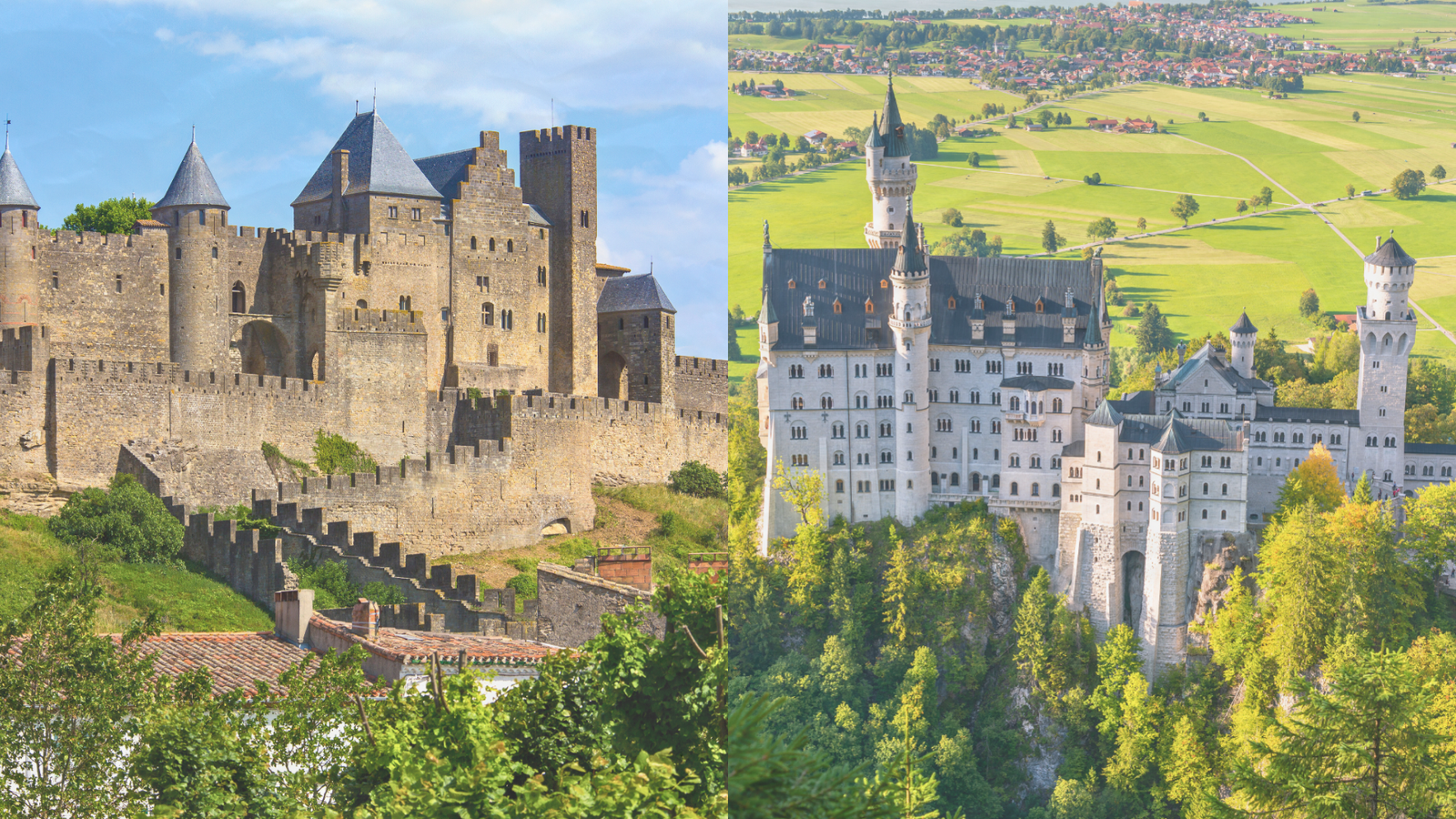



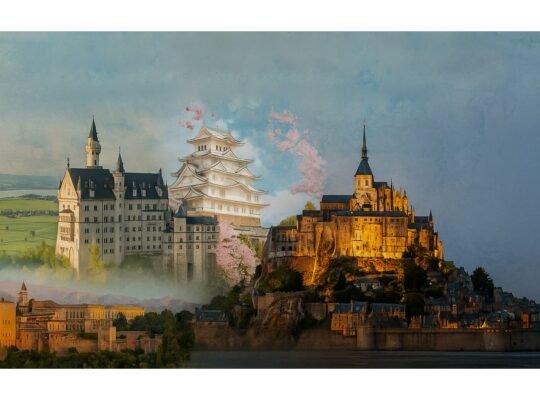
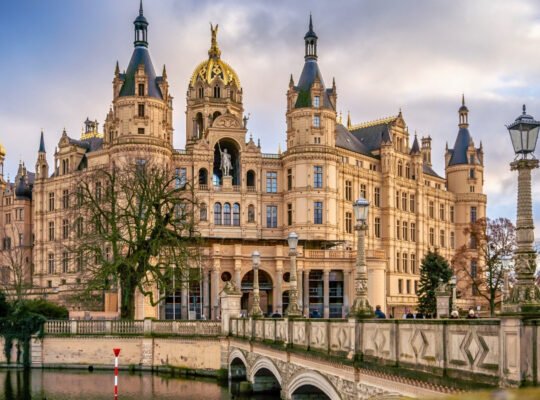
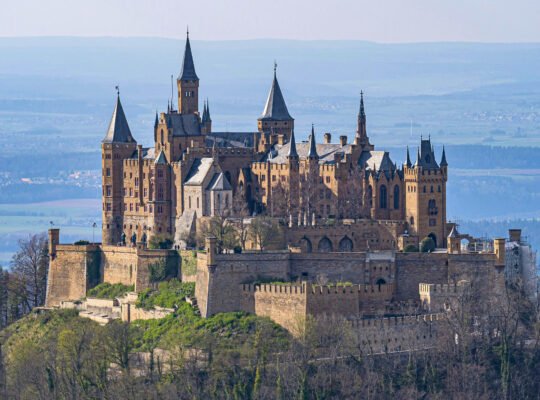
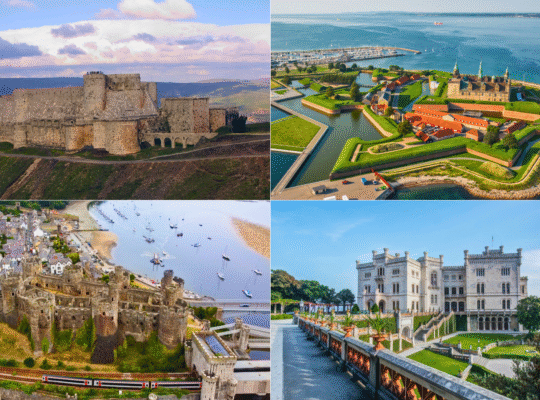
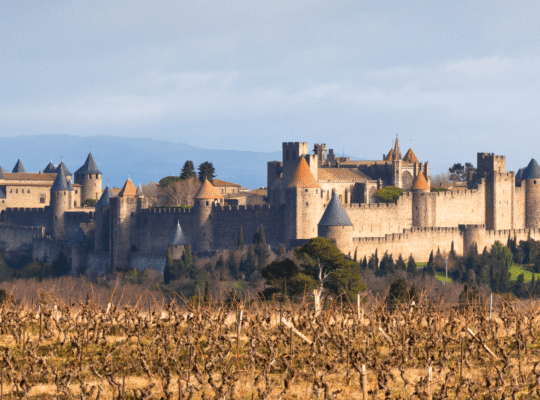
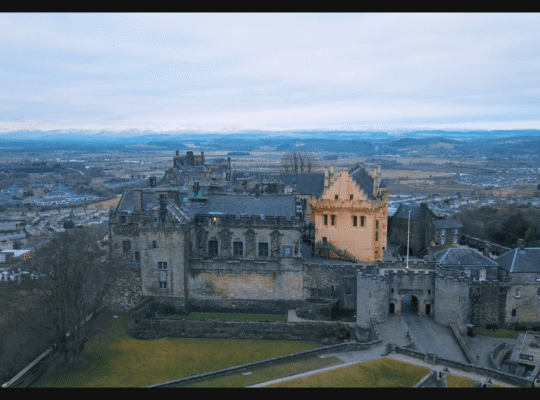
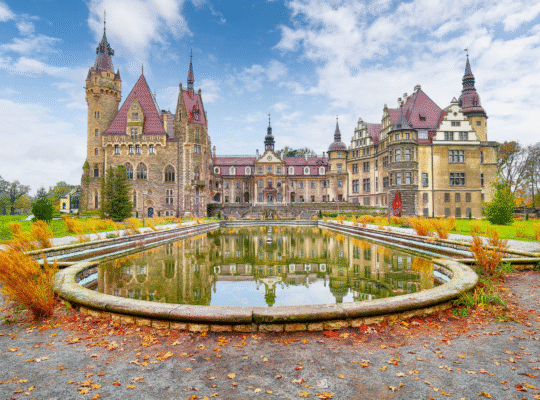
1 Comment